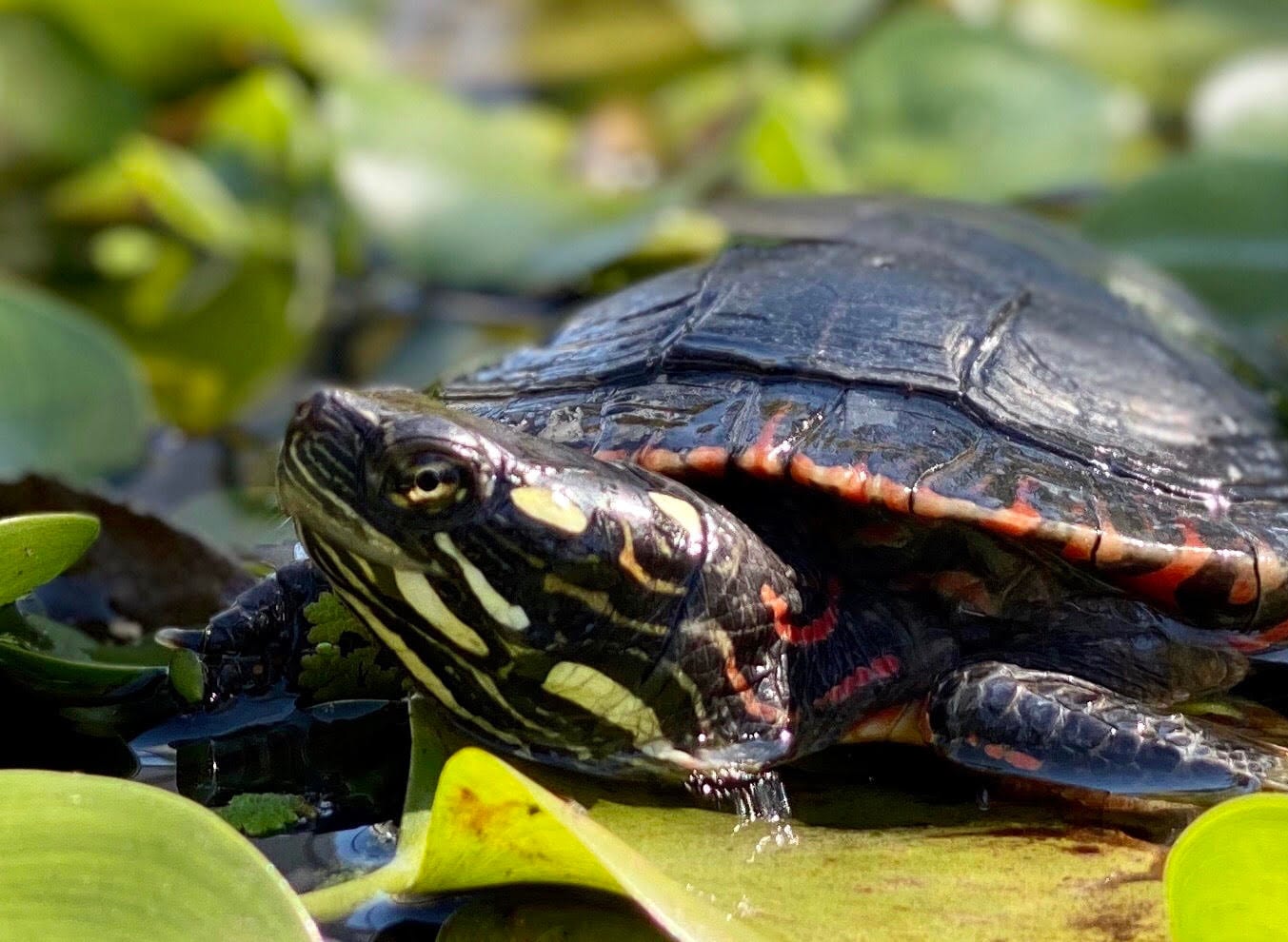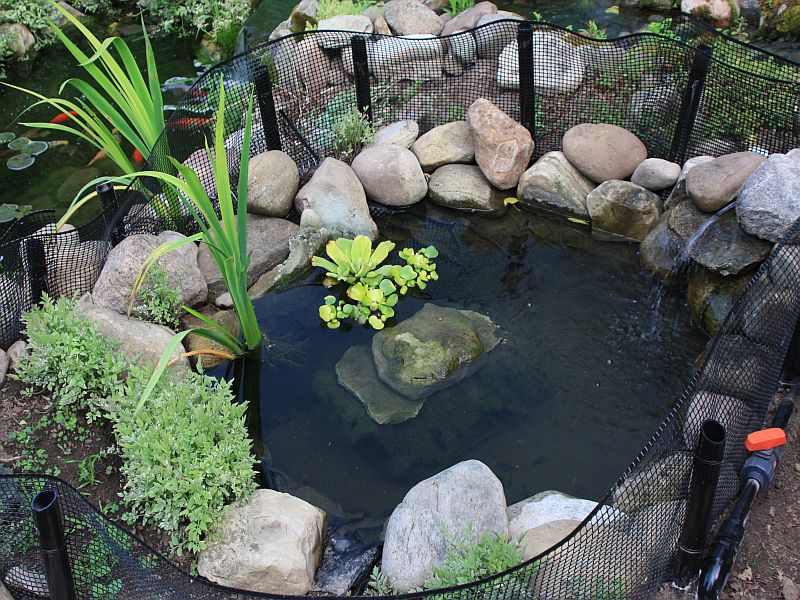To keep turtles out of your pond, install a sturdy fence around the perimeter and use mesh covers. Additionally, keep the pond area free of debris and plants that attract turtles.
Regularly check for any signs of turtle activity and deter them using natural repellents if needed. Remember to provide alternative sources of water nearby to discourage turtles from entering the pond. By following these steps, you can effectively protect your pond from unwanted turtle visitors while maintaining a safe and healthy environment for your aquatic life.

Credit: splashsupplyco.com
Understanding Turtles And Ponds
Discover effective ways to keep turtles out of your pond. By using barriers, creating a turtle trap, or adding plants, you can protect your pond and the turtles. Understanding their behavior and implementing these strategies can help maintain a harmonious balance between your pond and the turtles.
Understanding Turtles and Ponds Turtles are fascinating creatures that often find their way into ponds, sometimes causing disruptions to the delicate ecosystem. It’s important to understand the relationship between turtles and ponds to effectively manage their presence. Let’s delve into the types of turtles commonly found in ponds and the impact they can have on the pond ecosystem. Types of Turtles Found in Ponds Different species of turtles can inhabit ponds, each with its own unique characteristics and behaviors. Some common types of turtles found in ponds include: 1. Painted Turtles: These turtles are known for their colorful markings and can often be seen basking on logs or rocks near the water’s edge. 2. Red-Eared Sliders: Recognizable by the distinctive red markings on their heads, red-eared sliders are frequently found in ponds and other aquatic habitats. 3. Snapping Turtles: Known for their large size and powerful jaws, snapping turtles can have a significant impact on the pond ecosystem. Impact of Turtles on Pond Ecosystem Turtles play a crucial role in the pond ecosystem, but their presence can also have both positive and negative effects. Understanding the impact of turtles on the pond ecosystem is essential for maintaining a healthy balance. Some key points to consider include: – Balancing Act: Turtles contribute to the ecosystem by consuming algae, insects, and plant matter, helping to keep the pond clean and balanced. – Disruption: However, an overabundance of turtles can lead to disruptions in the pond ecosystem, particularly if they consume excessive amounts of vegetation or prey on other aquatic species. – Habitat Modification: Turtles can also modify their habitat by digging nests, which may impact the stability of the pond’s banks and shoreline vegetation. By recognizing the types of turtles found in ponds and understanding their impact on the ecosystem, pond owners can implement strategies to coexist with these fascinating reptiles while maintaining a healthy and thriving pond environment.Natural Deterrents For Turtles
Aquatic Plants As A Barrier
Aquatic plants can serve as a natural barrier to keep turtles out of your pond.
Creating A Turtle Trap
You can create a simple turtle trap to catch and relocate turtles from your pond.
Physical Barriers And Fencing
When it comes to keeping turtles out of your pond, physical barriers and fencing are effective methods to protect your aquatic ecosystem. By installing pond netting and constructing turtle-proof fencing, you can create a barrier that prevents turtles from accessing your pond while maintaining its aesthetic appeal.
Installing Pond Netting
Pond netting is a simple yet effective way to prevent turtles from entering your pond. The netting acts as a physical barrier, preventing turtles from accessing the water while still allowing sunlight and airflow to reach the pond. To install pond netting:
- Cut the netting to the appropriate size, ensuring it extends beyond the perimeter of the pond.
- Secure the netting in place using stakes or weights to prevent turtles from lifting or moving it.
- Regularly inspect the netting for any damage or signs of wear and tear, repairing or replacing it as needed to maintain its effectiveness.
Constructing Turtle-proof Fencing
Turtle-proof fencing is a more permanent solution to keep turtles out of your pond. This type of fencing is designed to withstand the efforts of turtles to climb or burrow underneath it, effectively preventing their access. To construct turtle-proof fencing:
- Select a sturdy fencing material such as metal or PVC, ensuring it is tall enough to prevent turtles from climbing over it.
- Bury the bottom of the fencing several inches into the ground to prevent turtles from burrowing underneath it.
- Regularly inspect the fencing for any gaps, damage, or areas where turtles may attempt to breach it, making necessary repairs or adjustments to maintain its effectiveness.
:strip_icc()/aquatic-turtles-and-outdoor-ponds-1238361-FINAL-fc0a2156f1d9412094c2e635feca630e.png)
Credit: www.thesprucepets.com
Behavior Modification Techniques
Turtles are fascinating creatures, but they can become a nuisance when they invade your pond. Fortunately, there are behavior modification techniques that you can employ to keep them away. In this article, we will explore some of the most effective methods for keeping turtles out of your pond.
Use Of Motion-activated Sprinklers
Motion-activated sprinklers can be an effective way to keep turtles out of your pond. These sprinklers are designed to detect motion and spray water in the direction of the movement. Turtles are naturally afraid of water and will avoid it whenever possible. By installing motion-activated sprinklers around your pond, you can create a barrier that turtles will not want to cross.
Introducing Predator Decoys
Predator decoys can also be an effective way to keep turtles out of your pond. Turtles are naturally afraid of predators and will avoid areas where they believe predators are present. By introducing predator decoys, such as plastic alligators or snakes, around your pond, you can create the illusion that predators are present and discourage turtles from entering the area.
Overall, there are several behavior modification techniques that you can use to keep turtles out of your pond. By using motion-activated sprinklers and predator decoys, you can create a barrier that will deter turtles from entering the area. With a little patience and persistence, you can successfully keep turtles out of your pond and enjoy your space to the fullest.
Environmental Modifications
Make environmental modifications around your pond to deter turtles. Install fences or barriers to prevent access and add plants that turtles dislike. Create a turtle basking platform to draw them away from the pond. Regularly check for any breaches in your defenses.
Turtles can make great pets, but when they start invading your pond, it can be a different story. Not only can turtles be destructive to pond plants, but they can also introduce diseases that can harm other aquatic life. Fortunately, there are several environmental modifications you can make to keep turtles out of your pond.Adjusting Water Depth
Turtles prefer to bask in shallow water where they can easily climb out and sunbathe on nearby rocks or logs. If your pond has a gradual slope, consider adding a barrier such as a fence or rocks to make it harder for turtles to climb in and out. You can also adjust the water depth to make it less appealing to turtles. Keep in mind that turtles can still climb over shallow barriers, so it’s essential to create a steep slope or wall to deter them.Installing Basking Platforms
Another effective way to keep turtles out of your pond is by providing them with an alternative basking area. By installing basking platforms, you can attract turtles away from your pond and give them a safe and comfortable spot to sunbathe. Basking platforms can be made of various materials such as wood, rocks, or concrete. Be sure to place them in an area that is visible from your pond but far enough away to discourage turtles from entering the water.Removing Attractive Features
Turtles are attracted to ponds that provide them with food and shelter. If your pond has a lot of vegetation or fish, consider removing some of these features to make it less attractive to turtles. You can also remove any debris or rocks that turtles could use to climb in and out of your pond.Conclusion
By making these environmental modifications, you can keep turtles out of your pond and maintain a healthy and balanced aquatic ecosystem. Remember to choose modifications that are appropriate for the type of turtles in your area and to consult with a professional if you have any questions or concerns.Legal Considerations And Ethical Practices
When it comes to maintaining a pond, it’s important to consider legal and ethical aspects of dealing with wildlife, including turtles. Understanding wildlife protection laws and promoting coexistence with turtles are crucial for keeping turtles out of your pond while respecting their natural habitat.
Understanding Wildlife Protection Laws
Before taking any action to keep turtles out of your pond, it’s essential to familiarize yourself with the wildlife protection laws in your area. These laws aim to safeguard the natural environment and its inhabitants, including turtles. Consult with local wildlife authorities or conservation organizations to understand the specific regulations and permits required for managing turtle populations around your pond.
Promoting Coexistence With Turtles
Instead of simply keeping turtles out of your pond, consider promoting a harmonious coexistence with these fascinating creatures. Implementing ethical practices, such as providing alternative habitats and food sources, can help deter turtles from your pond without causing harm. By creating an environment that caters to the needs of turtles, you can encourage them to thrive in their natural surroundings while minimizing their presence in your pond.
Consulting With Wildlife Experts
When it comes to keeping turtles out of your pond, consulting with wildlife experts is crucial. These professionals can provide valuable insights and guidance to help you protect your pond and the turtles that inhabit it.
Seeking Advice From Environmental Agencies
- Local environmental agencies can offer specific advice.
- Check with them to understand regulations and best practices.
Engaging With Wildlife Biologists
- Wildlife biologists can assess the turtle population in your area.
- They can recommend strategies to deter turtles from your pond.
Monitoring And Maintenance
Monitoring and Maintenance of your pond is crucial to keep turtles out and maintain the balance of your ecosystem. By regularly inspecting barriers and assessing their impact on other wildlife, you can effectively manage the presence of turtles in your pond.
Regular Inspection Of Barriers
To prevent turtles from entering your pond, regular inspection of barriers is essential. Check for any gaps or weaknesses in fencing, ensuring that it is secure and intact. Repair any damages promptly to maintain the effectiveness of the barriers in keeping turtles out.
Assessing Impact On Other Wildlife
When implementing measures to deter turtles, it’s important to consider the impact on other wildlife in and around your pond. Evaluate the potential effects on fish, amphibians, and other creatures that contribute to the ecosystem. Ensure that the methods used to deter turtles do not harm or disrupt the balance of the pond’s natural environment.

Credit: m.youtube.com
Conclusion
To sum up, implementing a combination of physical barriers, natural deterrents, and pond modifications can effectively keep turtles away. By understanding their habits and preferences, you can create a turtle-friendly environment that keeps your pond safe and enjoyable for all.
Stay proactive in protecting your pond ecosystem!





Leave a Reply